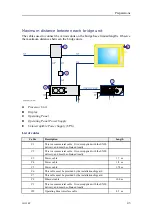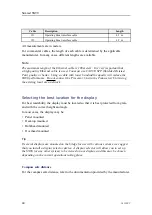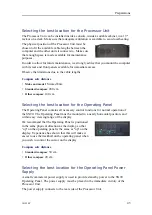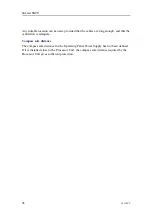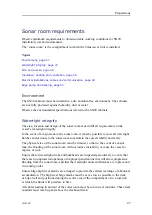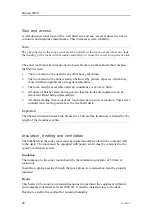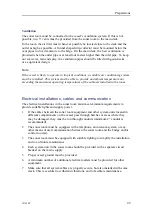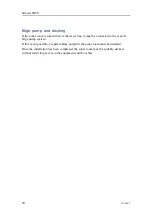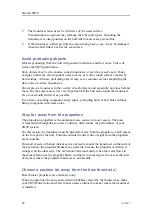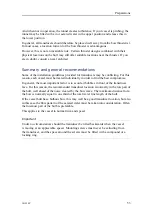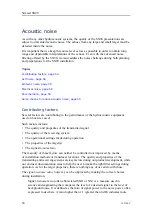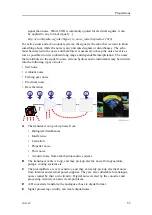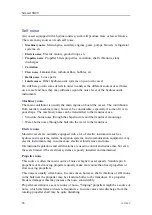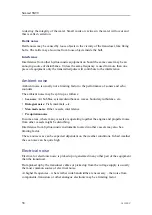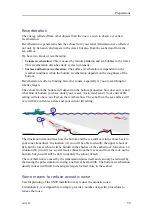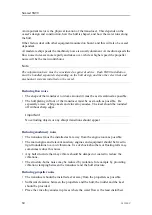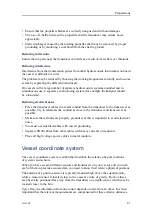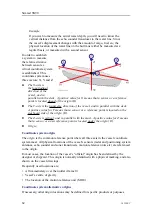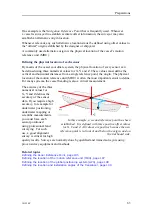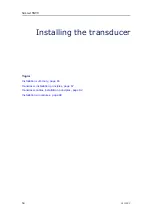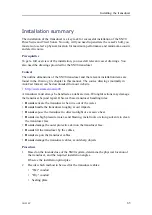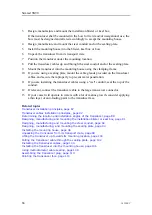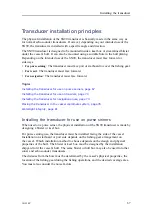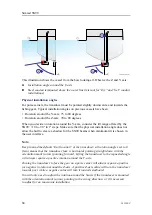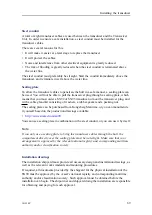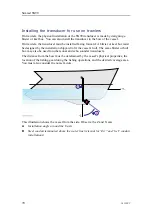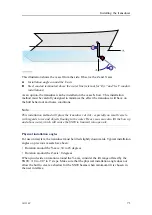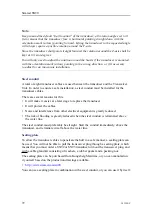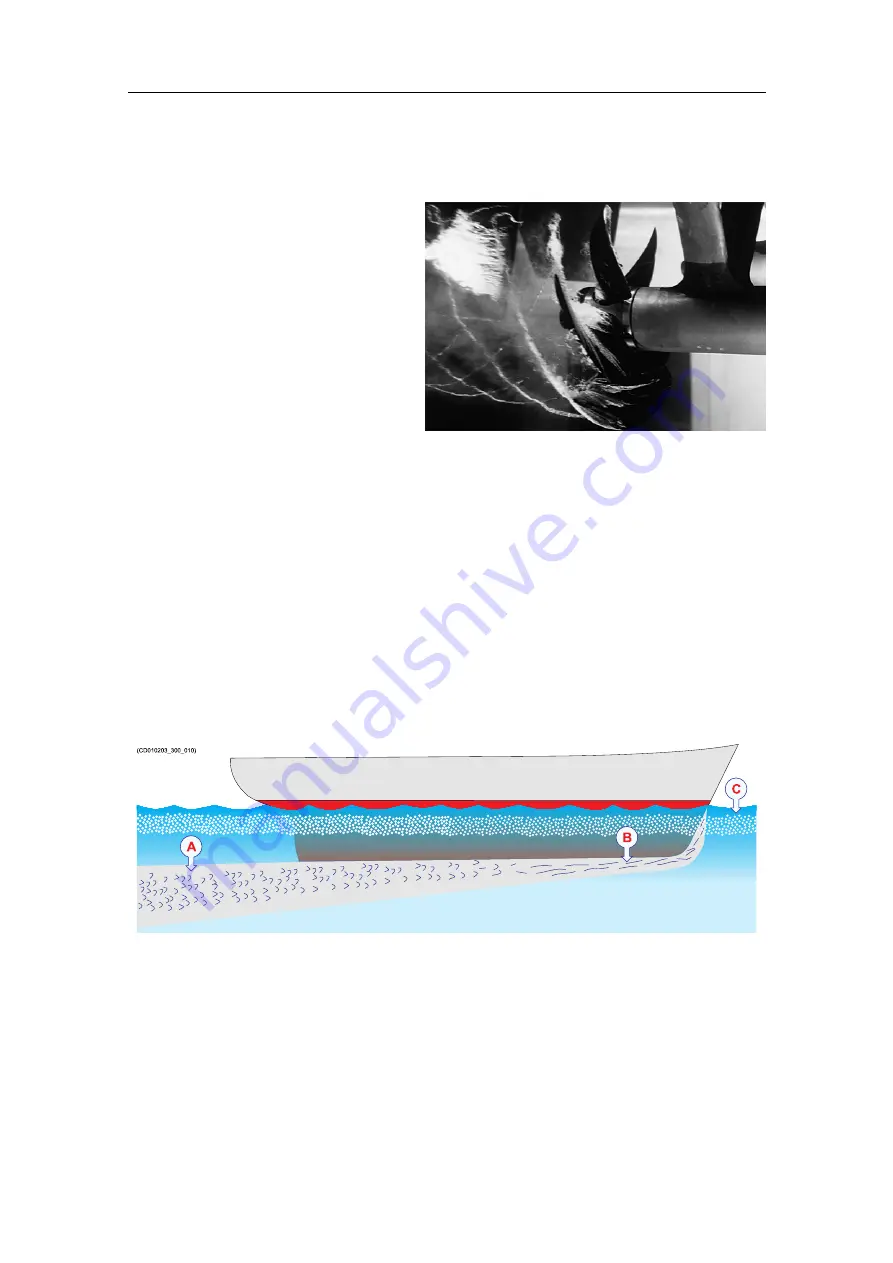
381298/C
57
Cavitation
Cavitation usually occurs more
willingly in air filled water and
the occurrence is dependent on the
hydrostatic pressure. Cavitation is
a severe source of noise. The noise
is made when the voids implode.
Cavitation noise often occurs at the
propeller and near extruding objects
at higher speeds.
Contributions to the flow noise may
also be caused by air bubbles hitting
the transducer face, or by the splash
caused by the waves set up by the vessel. In some cases a resonant phenomenon is set up
in a hole near the hull. This sound will have a discrete frequency, while all other flow
noise will have a wide frequency spectrum.
(Image from U. S. Navy in the public domain.)
Flow noise
Every object that moves through water will disturb the medium, and it will cause friction
in the water. The friction zone is called the
flow boundary layer
. The flow in this
boundary layer may be
laminar
or
turbulent
.
• The laminar flow is a nicely ordered, parallel movement of the water.
• The turbulent flow is a disorderly flow pattern, full of eddies.
(CD010203_300_010)
A
Turbulent flow
B
Laminar flow
C
Air bubbles
The boundary layer increases in thickness when it becomes turbulent. The boundary
layer is thin in the forward part of the vessel hull, and increases as it moves aft. The
thickness depends on ships speed and on the roughness of the hull. All objects sticking
out from the hull, or dents in the hull, will disturb the flow and will increase the thickness
of the boundary layer. When the flow speed is high, the turbulence can be violent enough
Summary of Contents for Simrad SN90
Page 2: ......
Page 117: ...381298 C 115 Related topics Installation summary page 65 Installing the transducer ...
Page 236: ...234 381298 C 372915 Clamping frame Simrad SN90 ...
Page 295: ......
Page 296: ... 2016Kongsberg Maritime ISBN 978 82 8066 179 1 ...
Page 297: ......

